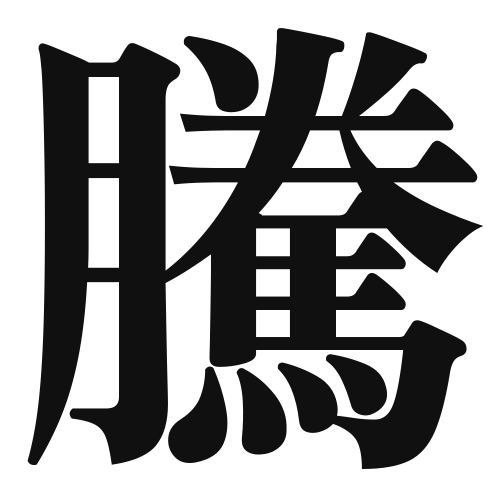1. Overview of Meaning
The kanji “騰” (tō) generally means “to rise,” “to leap,” or “to surge.” It conveys the idea of upward movement or an increase in something, often used in contexts related to prices, emotions, or physical actions.
2. Formation and Radical
Formation of the Kanji: The kanji “騰” is a phonetic-ideographic character (形声文字). It combines the radical for “horse” (馬) on the left, which relates to movement, and the phonetic component “登” (to ascend) on the right, which suggests the sound and meaning of rising.
Radical: The radical of “騰” is 馬 (uma), which means “horse.” This radical often relates to speed or movement in various kanji.
3. Examples of Usage
Common Words and Phrases:
- 騰貴 (tōki) – price increase
- 騰勢 (tōsei) – rising trend
Example Sentences in Daily Conversation:
- 最近、株価が騰がっている。 (Saikin, kabuka ga tobagatte iru.) – Recently, stock prices have been rising.
- 彼の気持ちが騰るのを感じた。 (Kare no kimochi ga togaru no o kanjita.) – I felt his emotions surging.
4. Synonyms and Antonyms
Similar Kanji:
- 昇 (shō) – to rise, often used in contexts like “昇進” (shōshin – promotion), which emphasizes advancement.
- 上昇 (jōshō) – to ascend, typically used in contexts like “上昇気流” (jōshō kiryū – rising air current), focusing on upward movement.
Antonyms:
- 下降 (kakō) – to descend, indicating a downward movement.
- 沈 (chin) – to sink, which conveys a more drastic downward motion.
5. Cultural and Historical Background
Relation to Japanese Culture: The concept of rising or surging is significant in Japanese culture, often associated with prosperity and success. The kanji “騰” can be found in various contexts, including finance and personal growth.
Proverbs and Idioms:
- 「上昇志向」 (jōshō shikō) – a desire to rise or improve oneself, reflecting the cultural value placed on personal development and ambition.
- 「波に乗る」 (nami ni noru) – to ride the wave, which metaphorically relates to taking advantage of rising opportunities.
